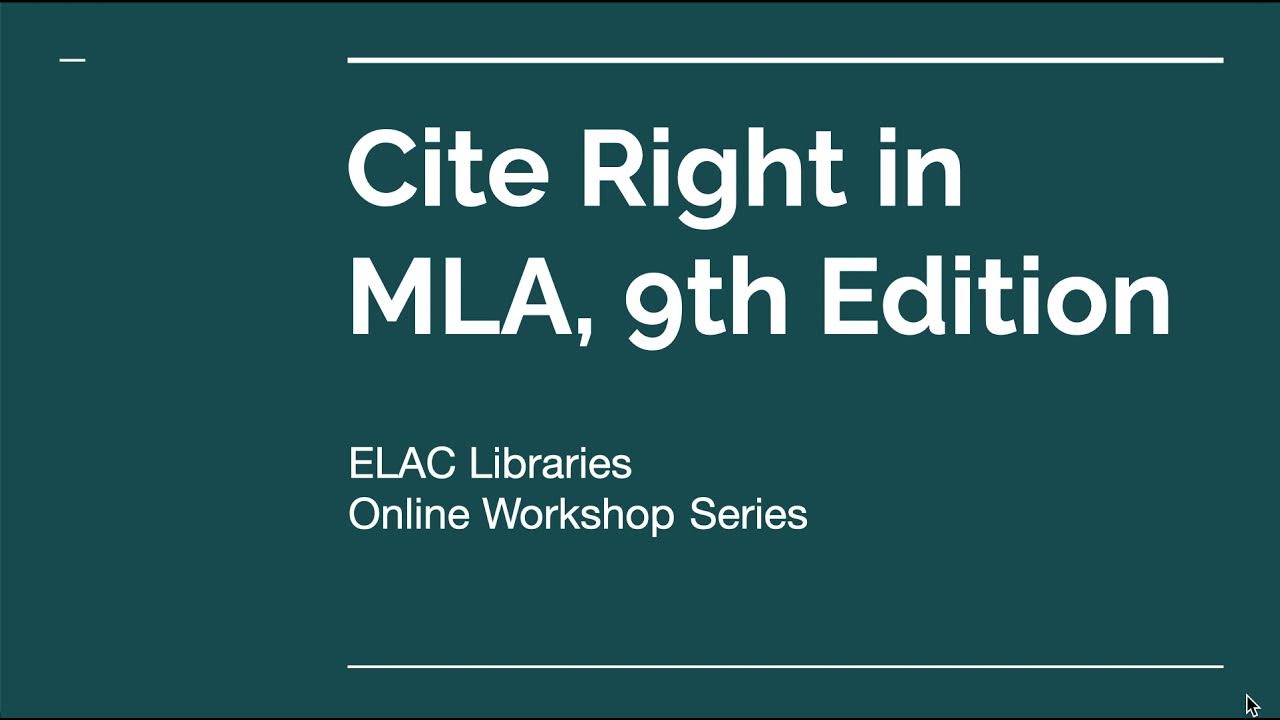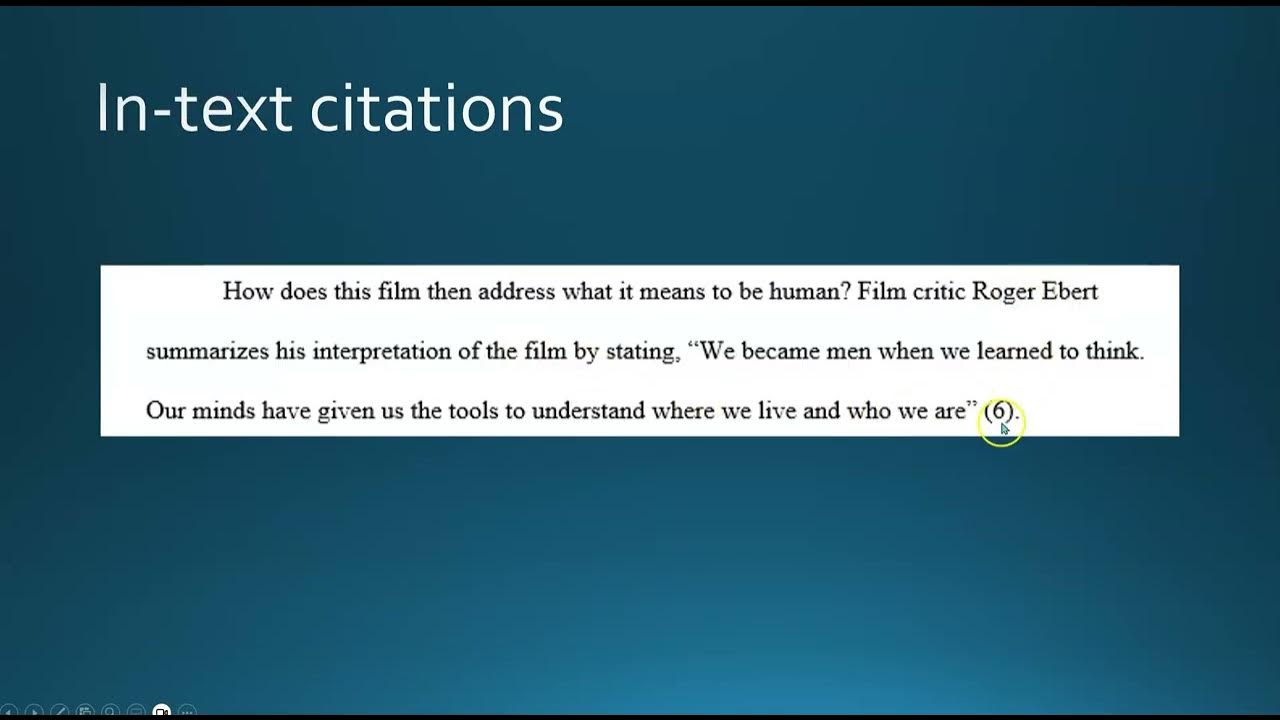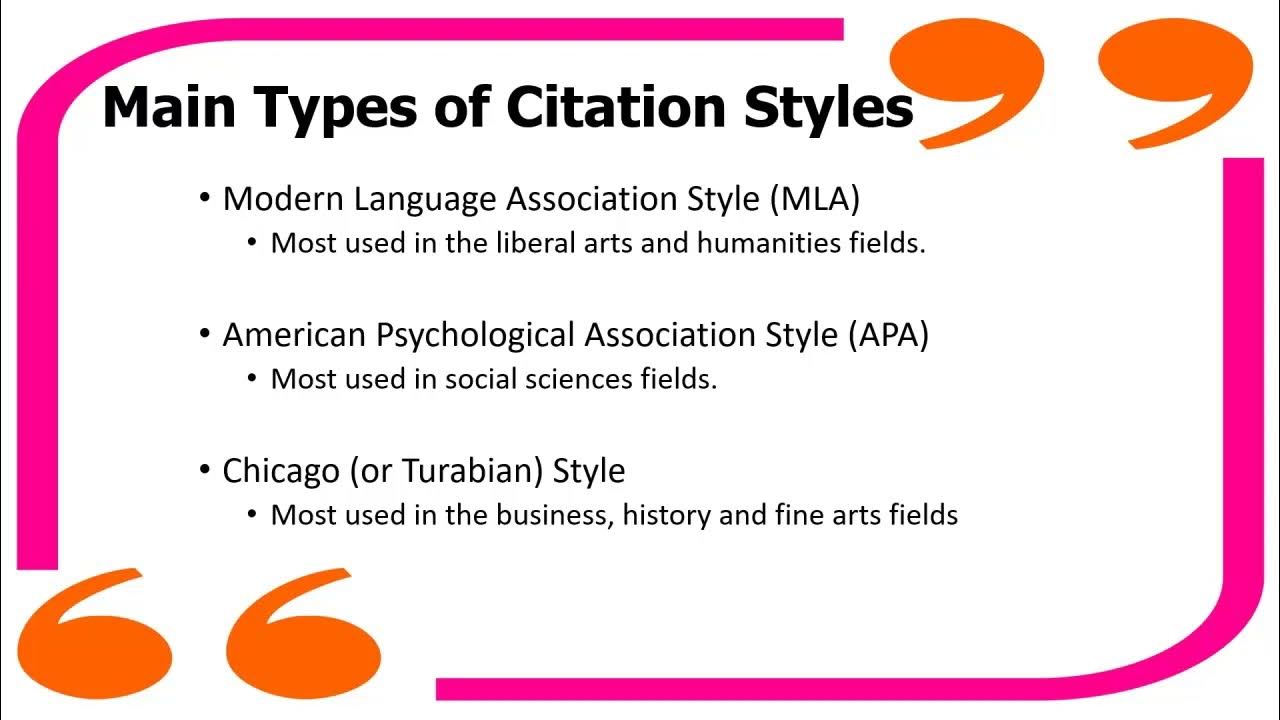MLA In-Text Citations (Step-by-Step Guide)
Summary
TLDRThis video tutorial offers a comprehensive guide on implementing MLA style citations in research papers, focusing on in-text citations. It addresses the significance of avoiding plagiarism by correctly citing sources, whether books or online articles. The presenter provides examples of how to cite with and without direct quotations, emphasizing the placement of author names and page numbers. Additionally, the video touches on the citation of common phrases and the evolving standards for online sources. For a complete understanding, viewers are directed to Purdue University's Online Writing Lab for further guidance on various citation scenarios.
Takeaways
- 😀 The video is a tutorial on using MLA style citations for in-text citations in research papers.
- 📚 It mentions that there will be a separate video on creating the 'Works Cited' page.
- 🏫 The video is particularly useful for high school and college students who need to write research papers.
- 🔍 The presenter recommends using the MLA style, which is commonly used in English classes.
- ⚠️ Plagiarism is highlighted as a serious issue that can lead to expulsion or other disciplinary actions.
- 📝 The importance of citing sources is emphasized to avoid plagiarism, even if it's unintentional.
- 🔗 Purdue OWL (Online Writing Lab) is recommended as a valuable resource for learning how to cite different types of sources.
- 📖 For in-text citations, the author's name must appear in the sentence or in parentheses, and the page number is always included in parentheses.
- 📝 Examples are provided to illustrate how to cite both direct quotations and paraphrased information.
- 💡 The video advises mixing up the citation style to avoid redundancy and improve the flow of the paper.
- 🌐 For online sources, the author's name is used if known; otherwise, the website's name or partial name is used.
- 📑 The video notes that MLA rules have changed regarding the inclusion of URLs in citations, but advises checking with the instructor for specific requirements.
Q & A
What is the main topic of the video?
-The main topic of the video is how to use MLA style citations for in-text citations when writing a research paper.
What is the purpose of the video?
-The purpose of the video is to educate viewers on how to correctly cite sources in MLA style to avoid plagiarism and to ensure proper academic integrity in research papers.
What is the significance of citing sources in academic writing?
-Citing sources is significant in academic writing as it acknowledges the original authors' work, avoids plagiarism, and allows readers to verify and locate the sources used in the paper.
What is plagiarism and why is it taken seriously?
-Plagiarism is the intentional or unintentional use of someone else's work or ideas as one's own. It is taken seriously because it is considered academic dishonesty and can result in expulsion or other disciplinary actions.
What is the MLA style and why is it commonly used in English classes?
-MLA (Modern Language Association) style is a set of guidelines for formatting academic papers and citing sources. It is commonly used in English classes because it is widely accepted in the humanities.
What is a recommended resource for learning MLA style citations?
-A recommended resource for learning MLA style citations is Purdue University's Online Writing Lab (OWL), which provides detailed guidelines and examples.
How should the author's name be included in an MLA in-text citation?
-The author's name should appear either in the sentence or in the parentheses at the end. It is not required to introduce the author at the beginning of every citation.
Where should the page number be placed in an MLA in-text citation?
-The page number should always be included in the parentheses at the end of the citation, never in the sentence.
What is the difference between a direct quotation and a paraphrase in MLA citations?
-A direct quotation in MLA citations requires quotation marks and the exact words from the source, while a paraphrase does not use quotation marks but still requires the author's name and page number since it is a rewording of the original text.
When is it acceptable not to cite a source even if it's a direct quotation?
-It is acceptable not to cite a source for a direct quotation if the phrase is common or universally known, such as a proverb, but quotation marks are still required.
How has the acceptance of online sources changed in academic papers over the past decade?
-Over the past decade, the acceptance of online sources in academic papers has increased, with MLA changing its rules in 2009 to accommodate the citation of online materials.
What is the current rule regarding including URLs in MLA in-text citations?
-As of the MLA rule changes in 2009, it is no longer required to include URLs in in-text citations. However, it is recommended to check with the instructor's preference as many may still expect it.
What are the formatting rules for block quotations in MLA style?
-For block quotations in MLA style, the text is indented without quotation marks, and the period is placed after the parenthetical citation.
How should you indicate added words in a quotation?
-Added words in a quotation should be enclosed in brackets to indicate that they are not part of the original text.
Outlines

This section is available to paid users only. Please upgrade to access this part.
Upgrade NowMindmap

This section is available to paid users only. Please upgrade to access this part.
Upgrade NowKeywords

This section is available to paid users only. Please upgrade to access this part.
Upgrade NowHighlights

This section is available to paid users only. Please upgrade to access this part.
Upgrade NowTranscripts

This section is available to paid users only. Please upgrade to access this part.
Upgrade Now5.0 / 5 (0 votes)





